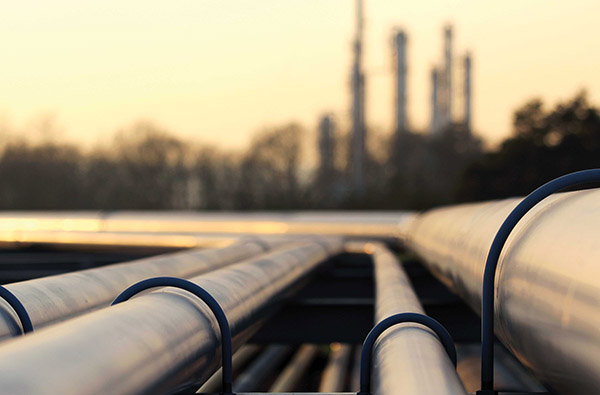November 2022, Vol. 249, No. 11
Government
INGAA Opposes Some New Pipeline Safety Mandates

By Stephen Barlas, Contributing Editor, Washington, D.C.
(P&GJ) — Interstate gas pipelines will have nine months to comply with some of the significant, new safety regulations from the Pipeline and Hazardous Materials Safety Administration (PHMSA). The agency has been working on these rules for a decade, ever since the San Bruno, Calif., gas explosion on a PG&E pipeline in 2010, which killed eight people.
The agency previously issued two post-San Bruno rules, one in October 2019. The rules involve maximum allowable operating pressure (MAOP) reconfirmation and material properties verification, the expansion of integrity assessments beyond high-consequence areas (HCA) and some other things. The second final rule came out in 2021 and affected only gathering lines.
This third new rule has lots of technical tentacles, some of which pipeline companies and the Interstate Natural Gas Association of America (INGAA) opposed in the proposal stage.
INGAA staff and industry officials such as Darral Ward, Boardwalk Pipelines, manager of Pipeline Safety, and Eric Taylor, BHE GT&S, manager of Pipeline Safety Group, held two meetings with PHMSA officials in September prior to deciding which issues to include in a petition of reconsideration INGAA submitted on Sept. 23.
PHMSA officials, led by John A. Gale, director, Office of Standards and Rulemaking, agreed to issue clarifying guidance in the future in the form of frequently asked questions (FAQs).
An INGAA spokesperson says the group is strongly supportive of the just-published gas transmission final rule but is arguing the nine-month effective date is inconsistent with pipeline safety, impractical and unreasonable.
“The rule, as written, does not follow GPAC recommendations that had the input of representatives of the public, state regulators, and industry,” he added. GPAC is PHMSA’s Gas Pipeline Advisory Committee.
INGAA’s Ben Kochman, director of Pipeline Safety Policy, and Dave Murk, director of Pipelines, American Petroleum Institute, signed the 30-page petition submitted to PHMSA on Sept. 23. It asks that PHMSA give transmission companies 18 months instead of nine to comply with the rule’s provisions, especially given other new requirements that have just been imposed.
Citing other new PHMSA regulations such as the Valves Final Rule, which became effective Oct. 5 and requires compliance by April 10, 2023, the petition argues, “Imposing a nine-month compliance schedule, which was not subject to notice and comment, and requiring operators to rush compliance efforts does a disservice to the goal of promoting pipeline safety and is not practicable or reasonable.”
The new post-San Bruno rule spans a broad range of safety issues and includes new requirements for data integration in the context of threat assessments of risks to pipelines when a company conducts integrity management procedures. Operators must consider 26 specific data elements.
All the “pertinent” elements have to be integrated into risk assessments by May 24, 2023, with all “available” attributes integrated by Feb. 26, 2024. Extensions of those deadlines for one year can be granted if a company submits a “reasonable and technically justified” explanation and states whatever temporary measures for safety are being put in place.
PHMSA is also explicitly requiring that operators integrate analyzed information into integrity management (IM) programs and is requiring that data be verified and validated.
PHMSA argues, as a rationale, that “many operators have not substantially improved their risk assessment techniques or models since the early initial efforts to prioritize baseline assessment plans in 2004, with the findings from the PG&E incident being a prime, national example.”
The objective is for transmission lines to achieve a “more detailed and comprehensive” program as discussed in the 2003 IM rule. Operators will have 18 months to “upgrade their risk assessment models, methodologies and analyses.”
The final rule also extends a Management of Change (MOC) process to non-high-consequence area pipelines. That addition is meant to prevent a situation like the San Bruno incident, in which a substandard segment of pipe was substituted without proper authorization.
The costs – PHMSA estimates $17 million a year – reflect improvements made to the MOC process, additional corrosion control requirements, provisions related to inspections following extreme weather events, and changes made to the repair criteria.
During the proposal stage, INGAA expressed concern that the provisions were more prescriptive than the ASME/ANSI standard the current IM requirements reference. INGAA also commented that PHMSA’s proposed inclusion of specific attributes from ASME/ANSI B31.8S in the regulatory text, alongside the existing references to standards, could cause confusion.
INGAA further stated that PHMSA should retain the current regulatory language requiring operators to “consider” the relevant data for covered segments (e.g., high-consequence areas) and similar non-covered segments, instead of adopting the proposed provisions that would require data evaluation for non-covered segments.
The final rule contains a detailed discussion of when pipeline cracks must be repaired and divides that schedule into four categories based on whether the defect is above or below some percentage of MAOP.
For example, Category 3: Predicted Failure Pressure (PFP) is above 110% MAOP and below 125% MAOP. Category 4: PFP is below 110% MAOP. Operators can use an engineering analysis on cracks in Categories 1 through 2. However, any Category 3 or 4 cracking defect below 125% MAOP would require immediate remediation.
That last requirement is one of the complaints in the INGAA/API petition, which argues it and a second new requirement to monitor and mitigate effects of corrosive “constituents” in a gas stream “departed from GPAC recommendations, some of them unanimous, without providing supporting evidence or explanation.”
There are specific thresholds for the need to repair metal loss on pipelines in a non-high-consequence area. Immediate repair is required, for example, for metal loss anomalies where a calculation of the remaining strength of the pipe at the location of the anomaly shows a predicted failure pressure of less than or equal to 1.1 times the MAOP. There are a number of “immediate repair” requirements beyond that one.






Comments